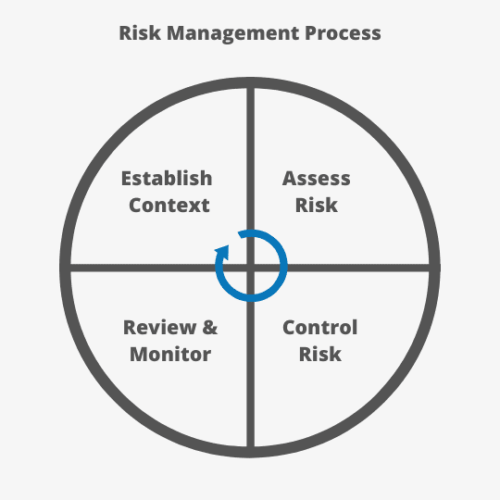The Importance of Risk Monitoring
February 13, 2024
Design | Managing the Risk Assessment | Risk Assessment | RiskWatch Blog
Risk Monitoring Overview
Risk monitoring is a crucial step in the total risk management process. Unfortunately, there is never a true end to the risk management process; risk monitoring will always be necessary to understand the risks an organization is facing and how any implemented changes are affecting those risks. This process will offer vital data to teams performing other risk management activities in the cycle and towards high-level executives that want to track progress. This blog will break down where risk monitoring takes place in an organization and what to look for in the monitoring process.What is Risk?
Now, the first step to understanding risk monitoring is to have a clear definition of risk. The international standard in risk management, developed by the International Organization for Standardization (ISO), explains this for us. They clearly define risk as the “effect of uncertainty on objectives.” This is a great, shortened definition, but let’s break it down. If we unpack that rather concise description, we can determine that risk is both uncertain, and causes an effect on something. That is, risks are intrinsically linked to objectives in a multitude of ways that we can’t always determine. As you work through your risk management process, it will become clear how your objectives break down and relate to uncertainties. Understanding what makes up a risk helps us understand the concept of risk monitoring and what that means for your organization.When Risk Monitoring Occurs
The risk management process is typically broken down into 5 steps for most organizations. These steps include:
-
- Identify Risks
- Analyze Risks
- Evaluate Risks
- Mitigate Risks
- Monitor and Review
- Potential risk indicators
- New risks that have not yet been identified
- Review likelihood and consequence of risks
- Impact of risks at varying degrees as changes take place
- Factors affecting the cost of risk management
- Progress on planned strategies and risk mitigation
Risk Monitoring Frequency
Risk teams often ask how often risk monitoring needs to occur, but there is no real “correct” answer other than as regularly as your organization is able to do so. Full risk assessments typically occur on a regular frequency of annually or biannually, but the state of monitoring risk mitigation efforts, the state of those risks, and other factors is a never-ending effort. This is typically a huge strain on risk teams and is why automation is necessary to allow teams the required time to complete this task.RiskWatch for Risk Management
As we’ve covered, risk monitoring can be a difficult and time-consuming process. This is where software comes in handy, by keeping your data organized and automating key functions in your process, such as writing reports or following up with employees to make sure they complete remedial tasks. Identified tasks are tracked and monitored within the platform. In fact, compared to a manual process, we’ve found that our customers typically decrease their entire assessment process time by 74%. Get started today and complete your first three risk assessments for free.
Subscribe for our latest posts
Categories
Try any of our products, free.
Riskwatch products are easy to use, free to try, and can be customized to fit your business needs.
